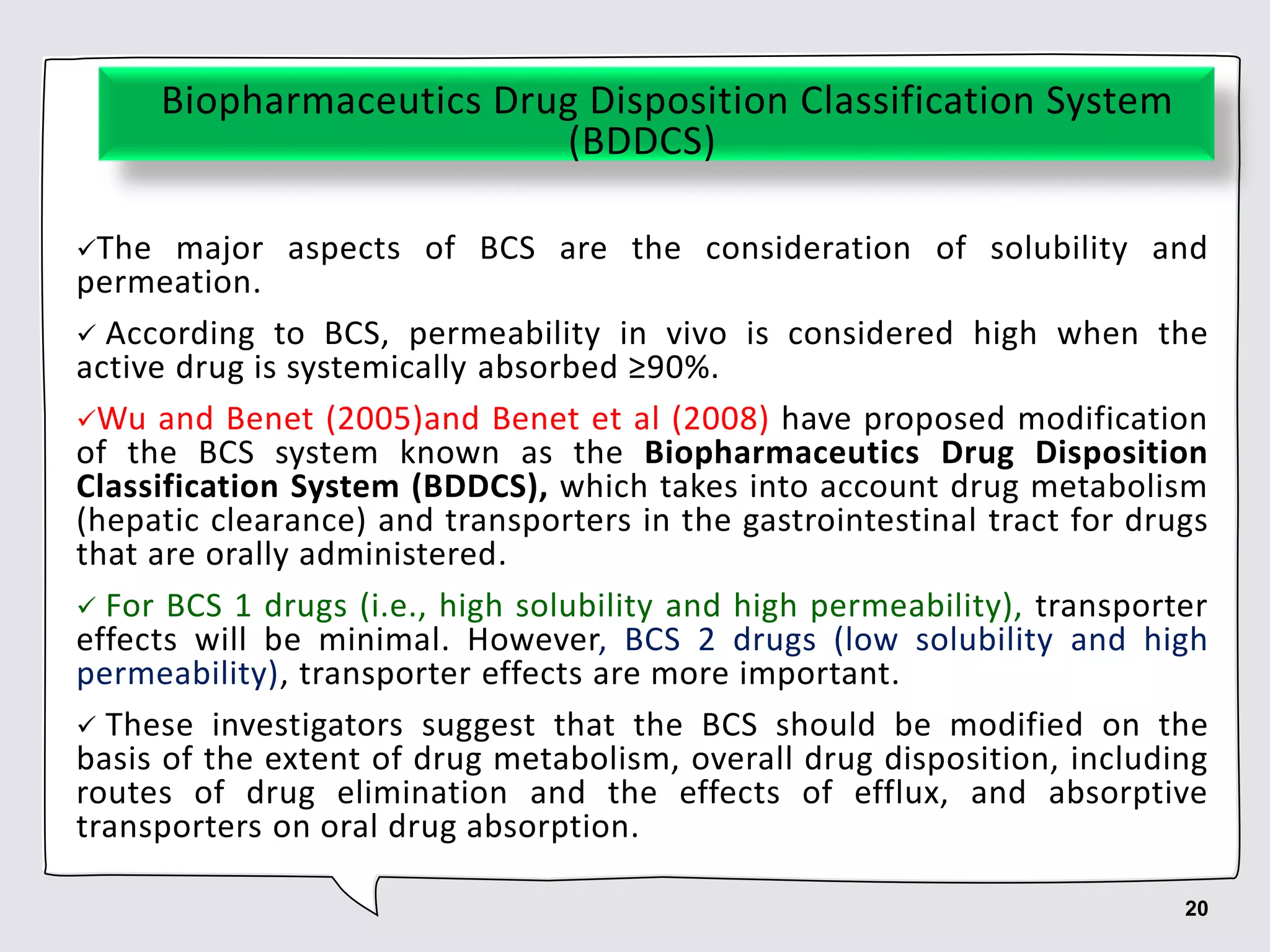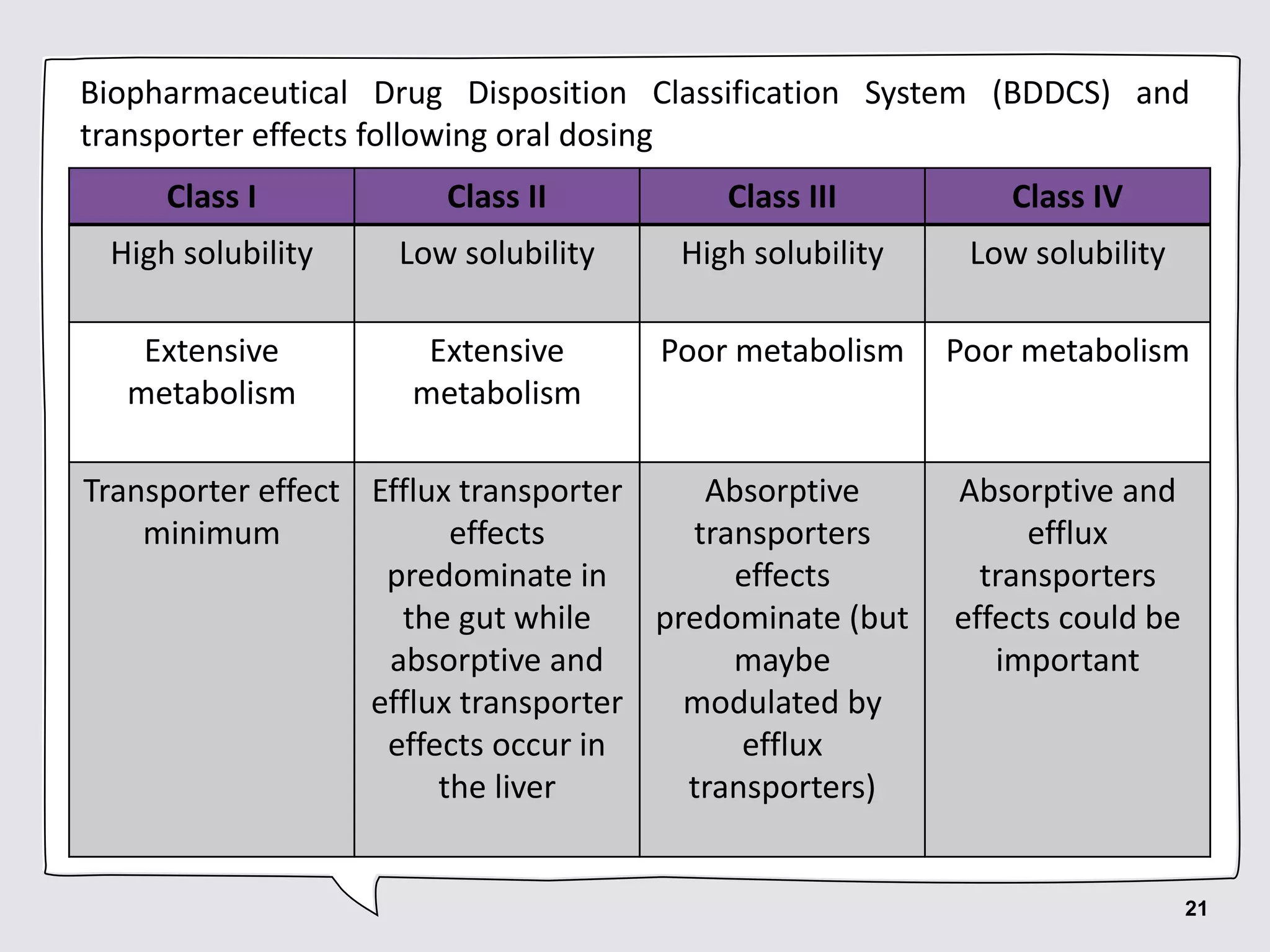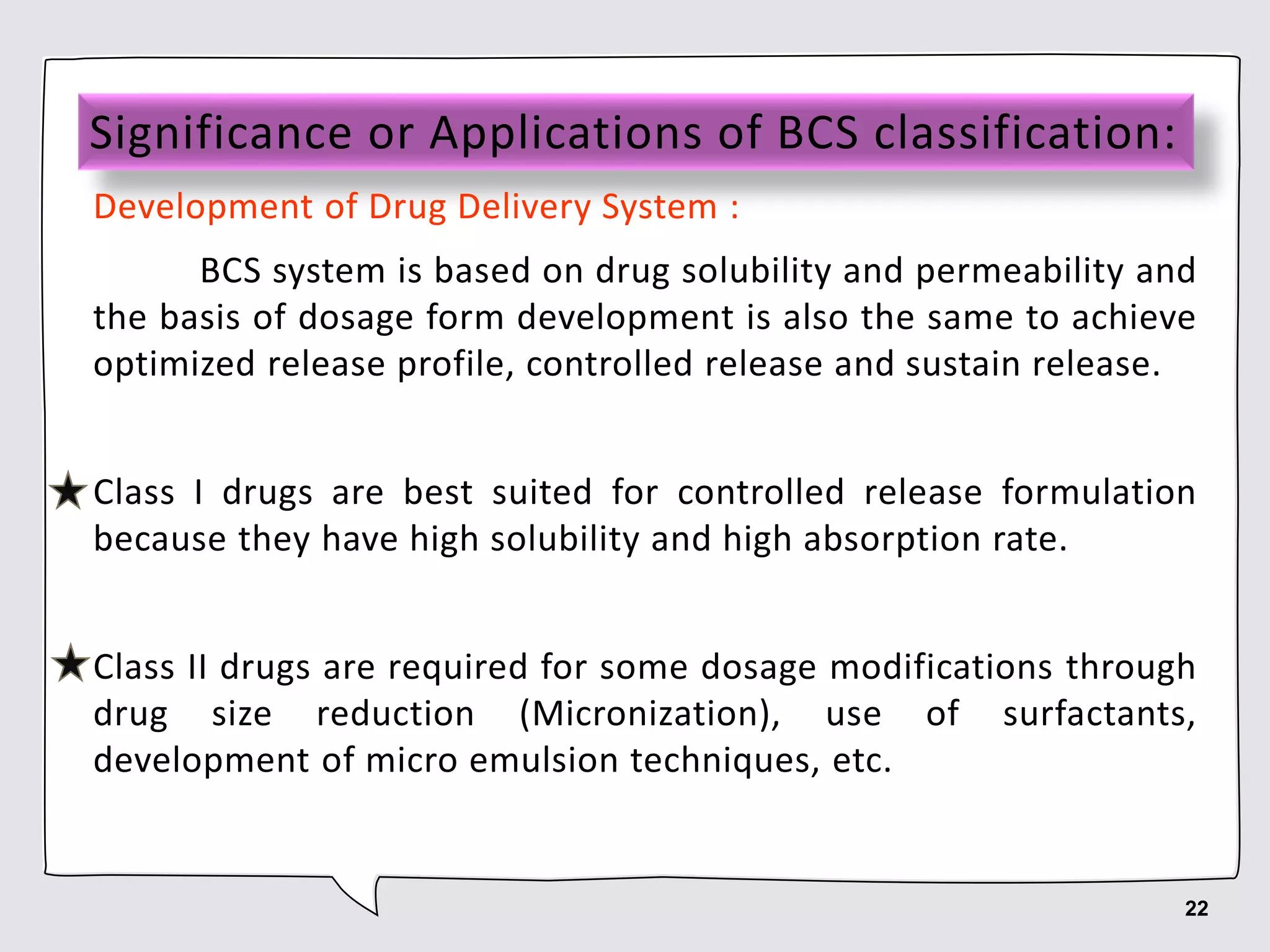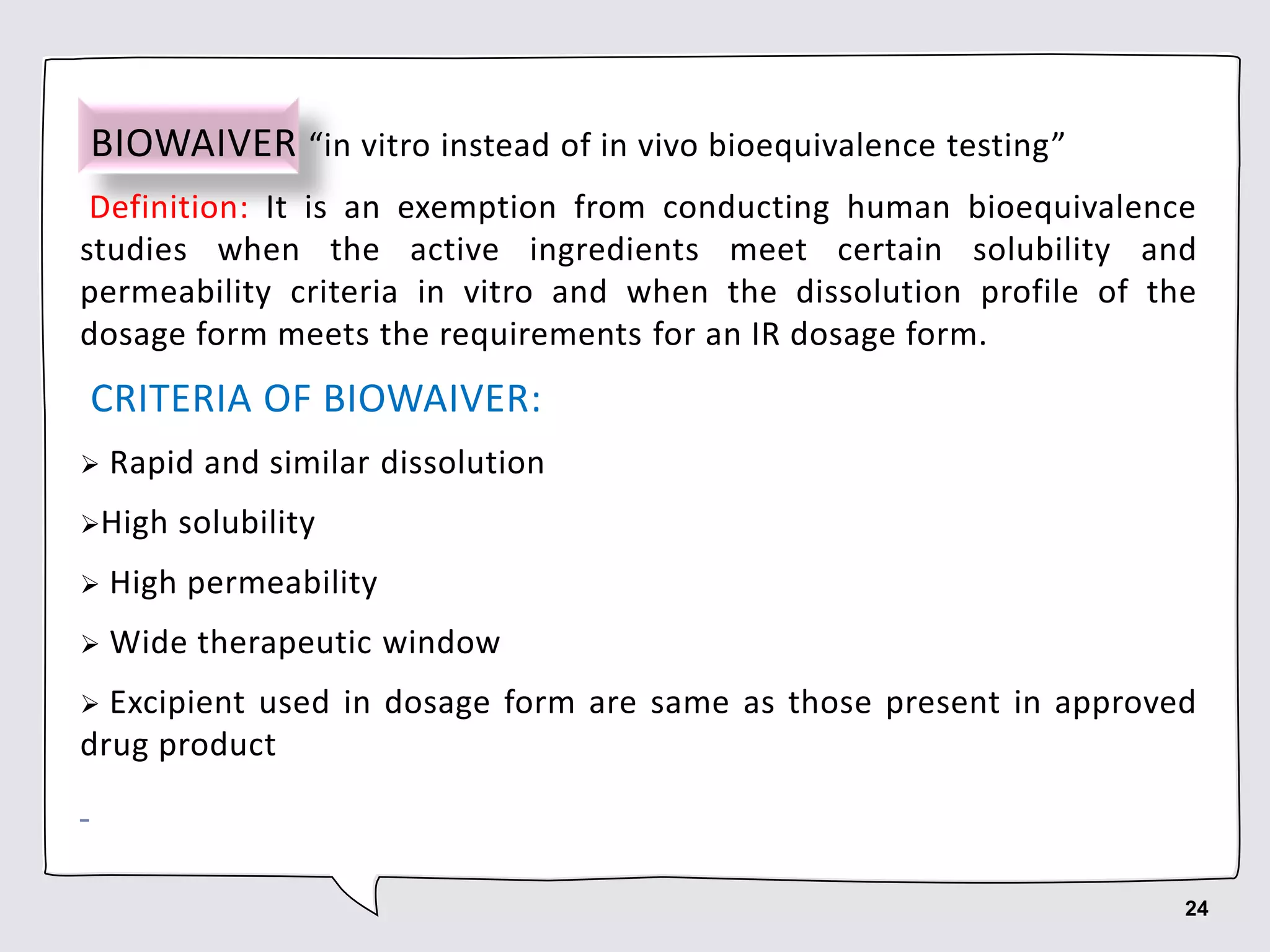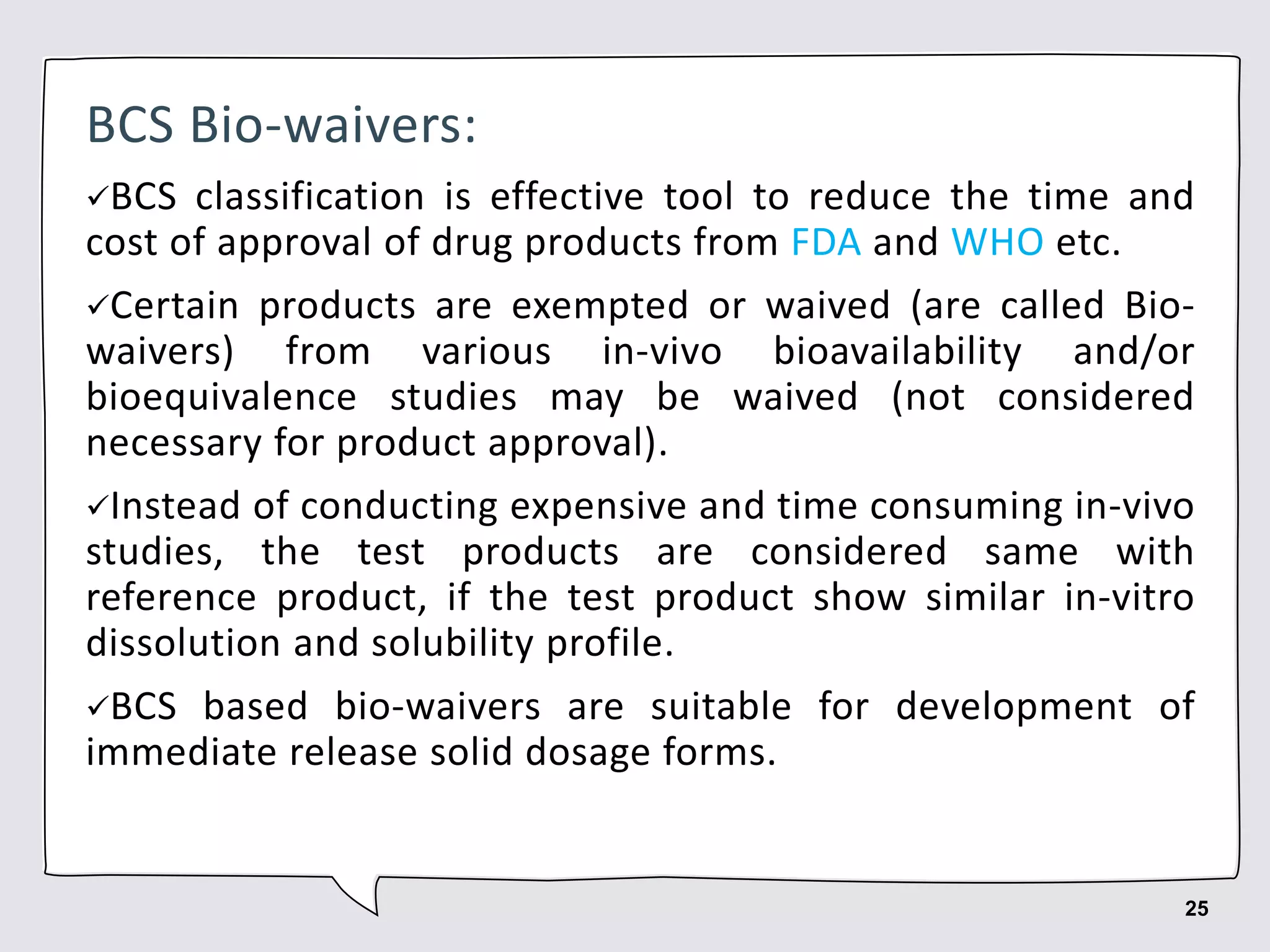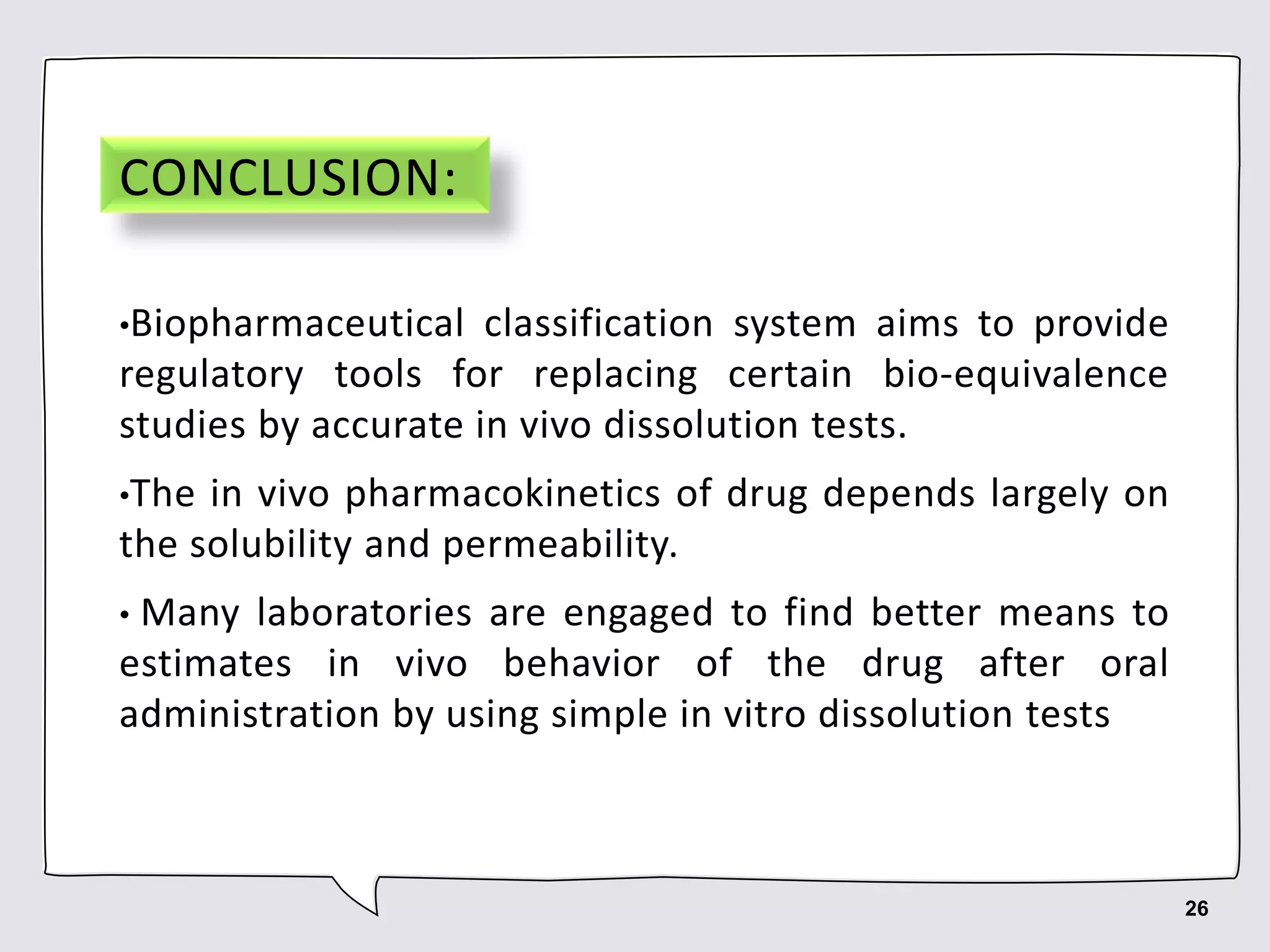The document provides an overview of the Biopharmaceutics Classification System (BCS). The BCS classifies drugs into four classes based on their aqueous solubility and permeability characteristics. Class I drugs are highly soluble and permeable. Class II drugs are highly permeable but poorly soluble. Class III drugs are highly soluble but poorly permeable. Class IV drugs exhibit low solubility and permeability. The BCS is used to guide drug product development and determine if in vivo bioequivalence studies can be waived based on in vitro dissolution testing.
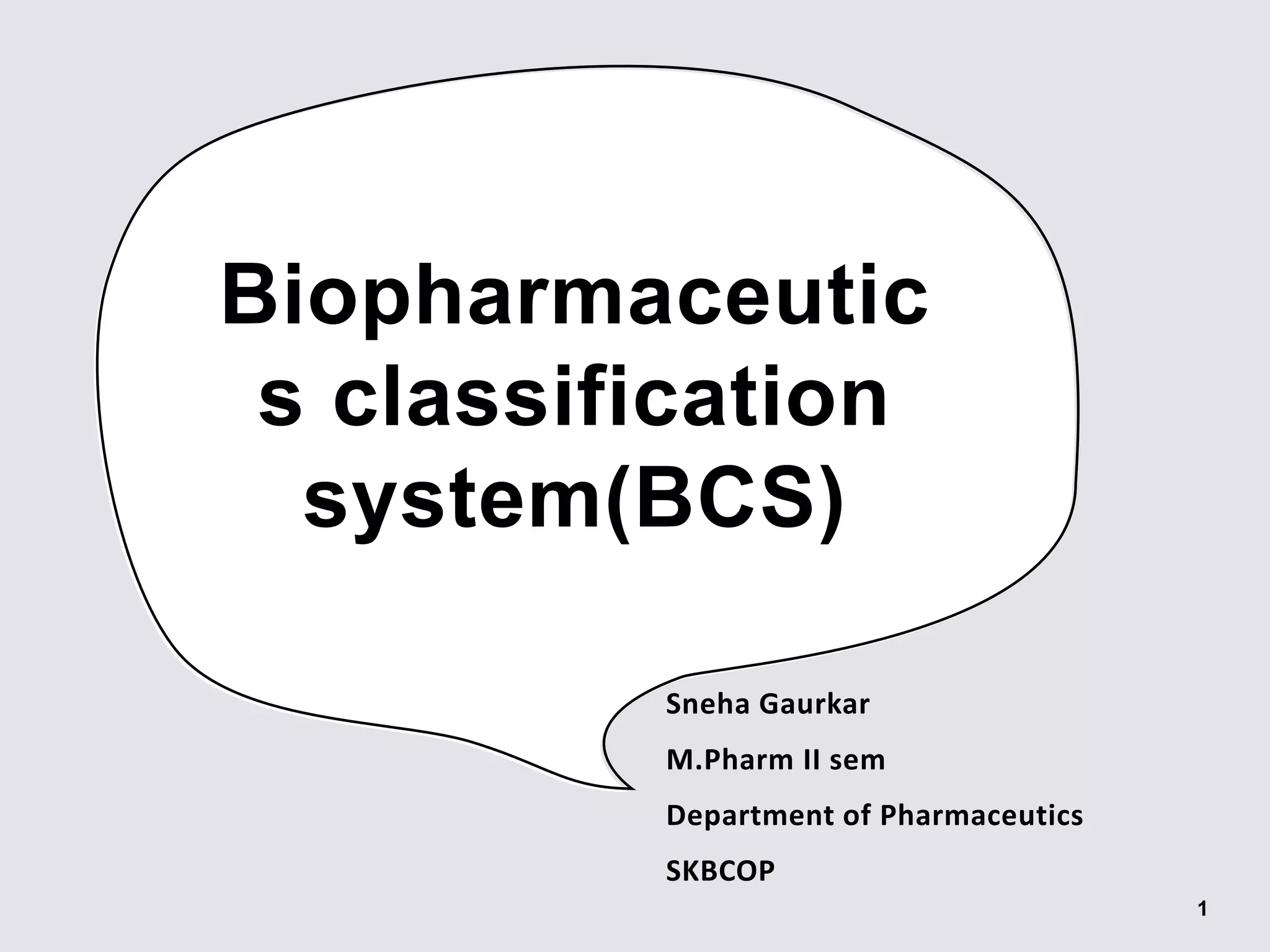
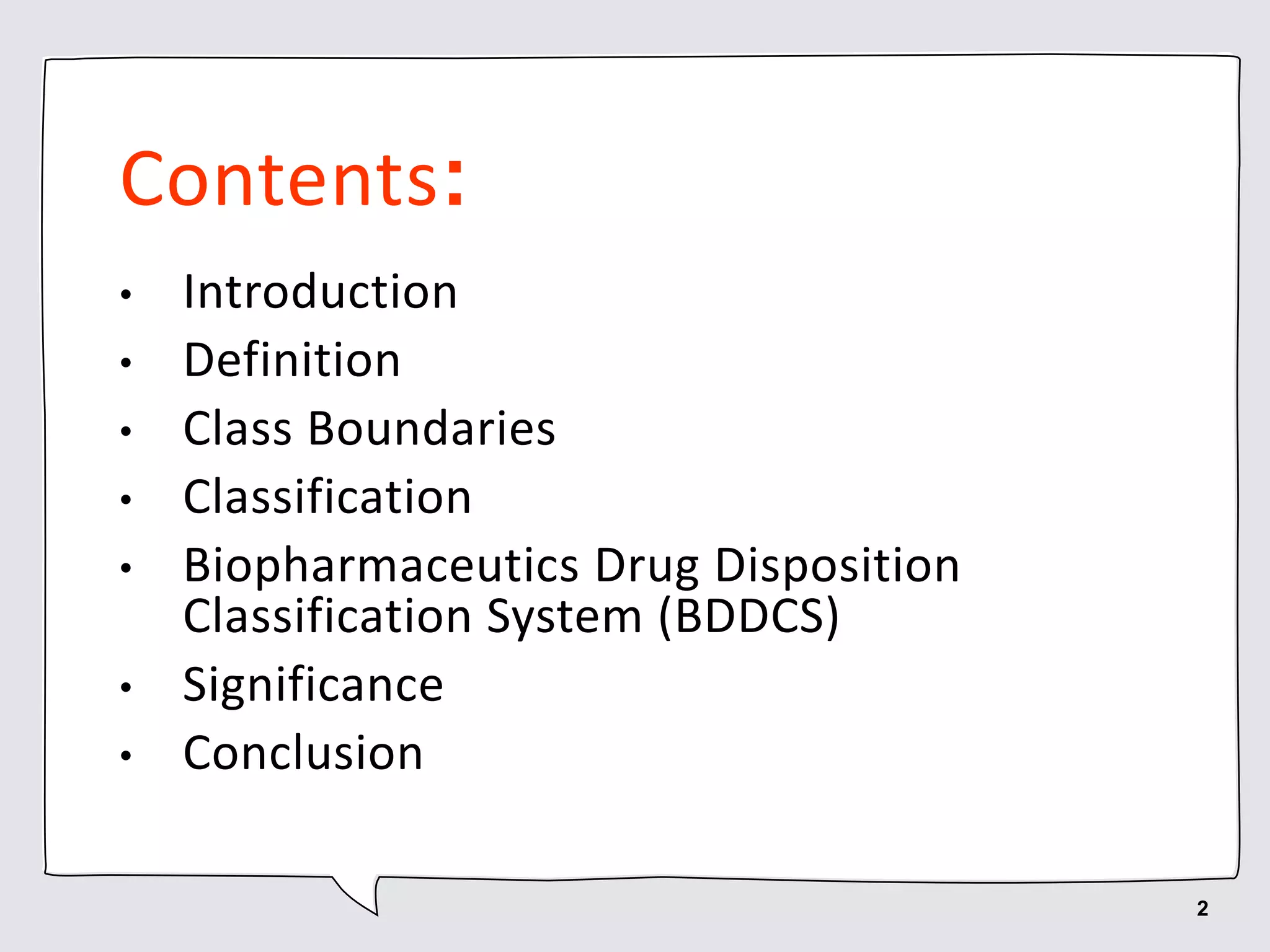
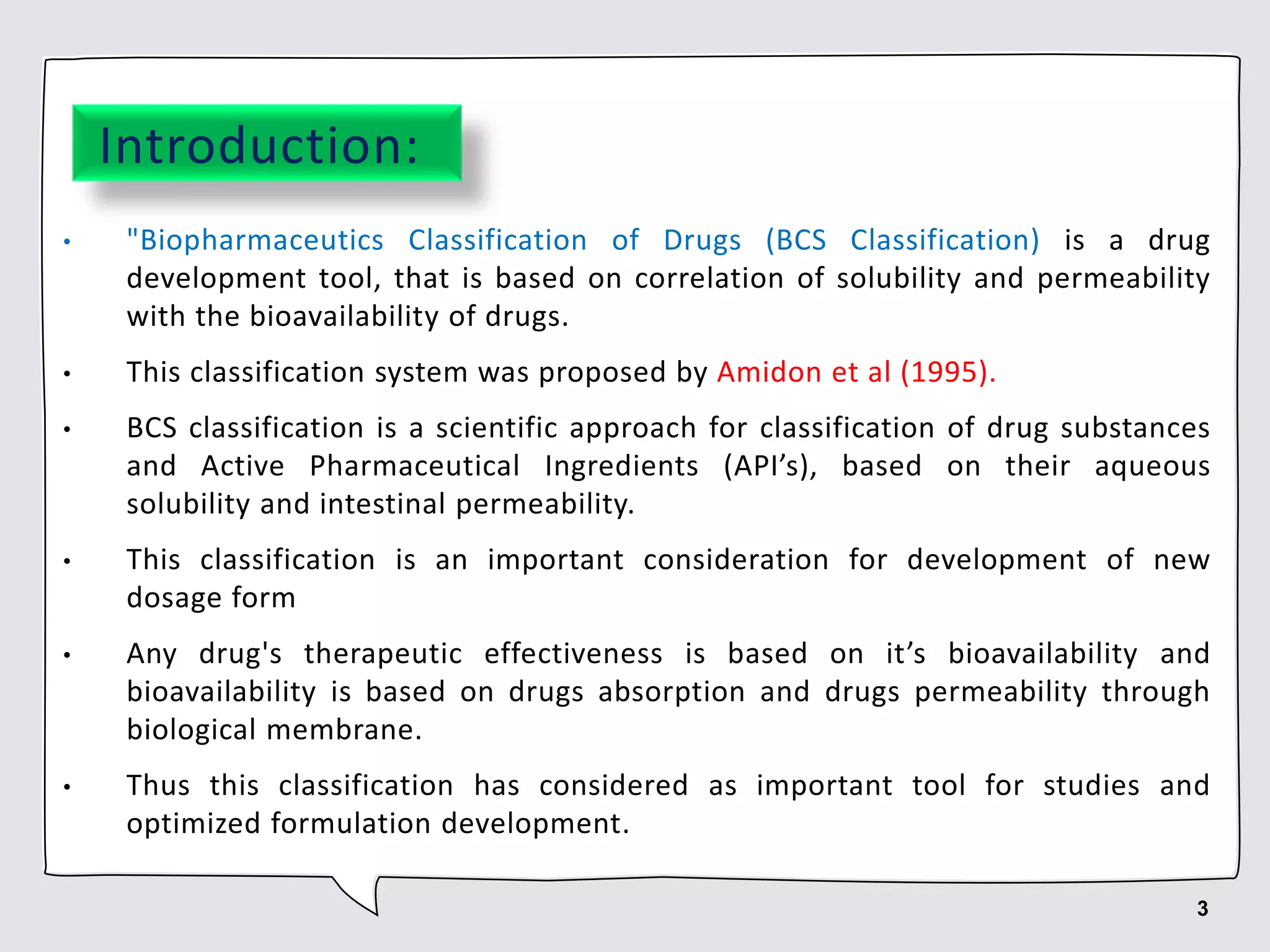

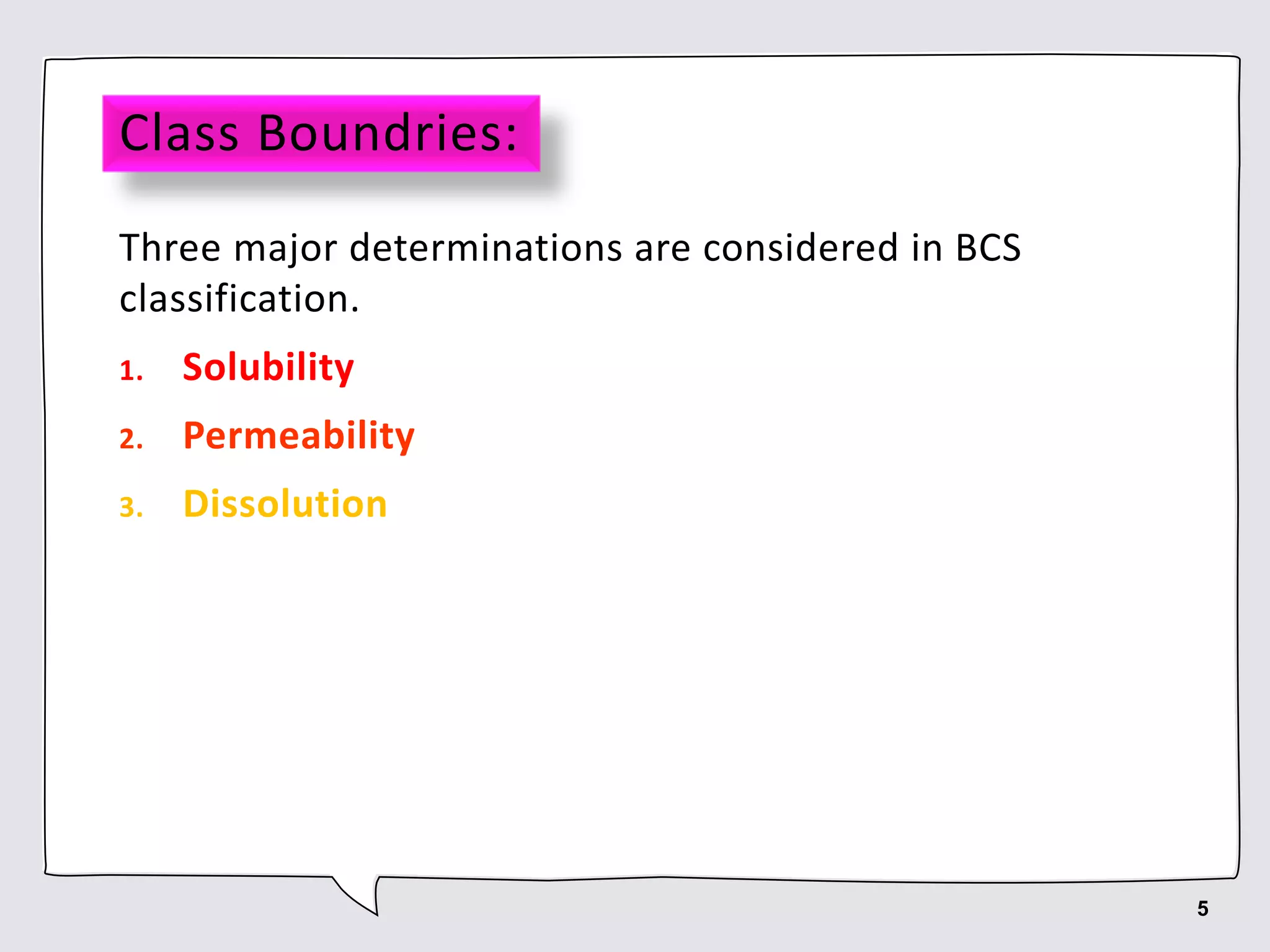
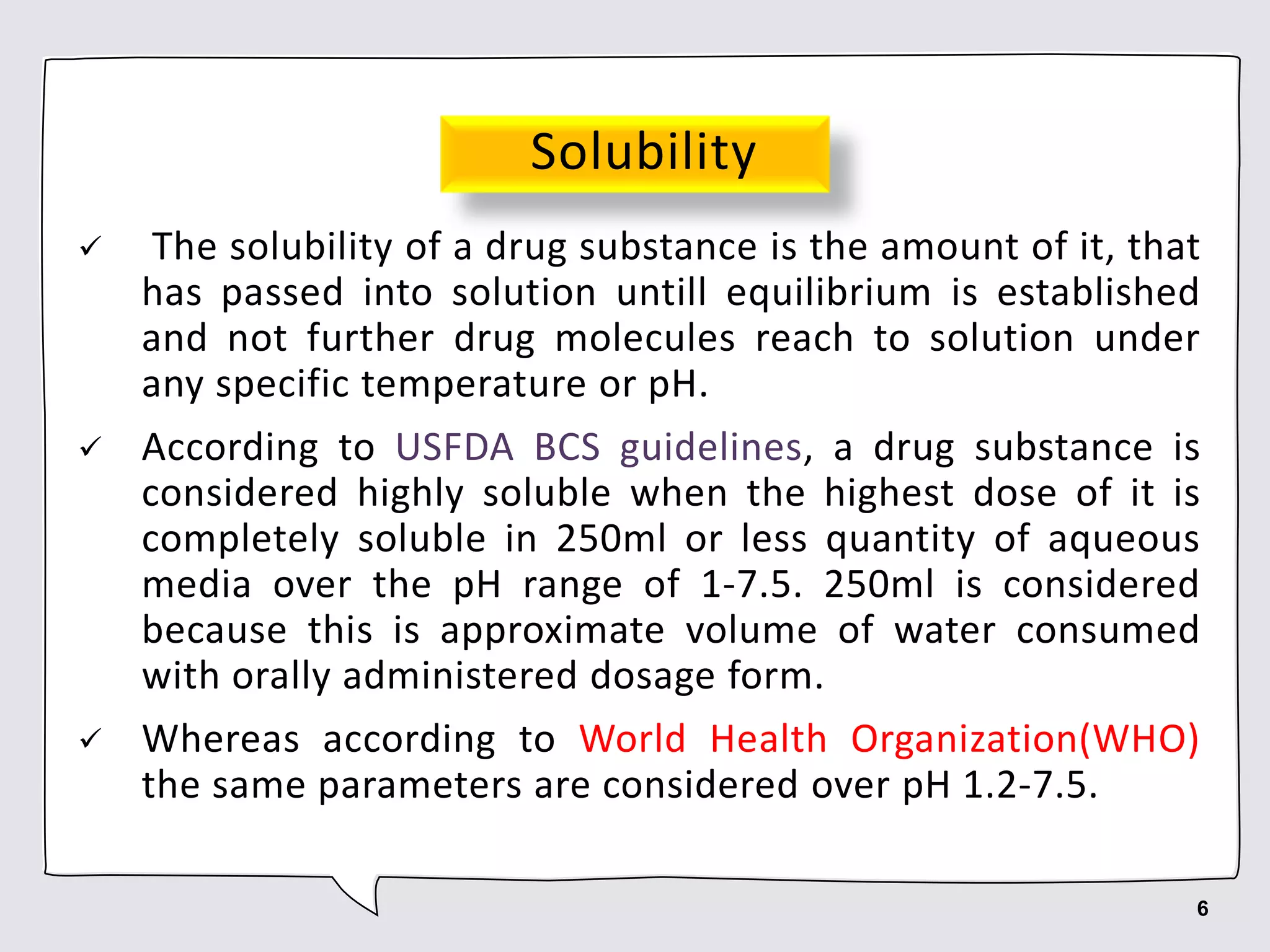
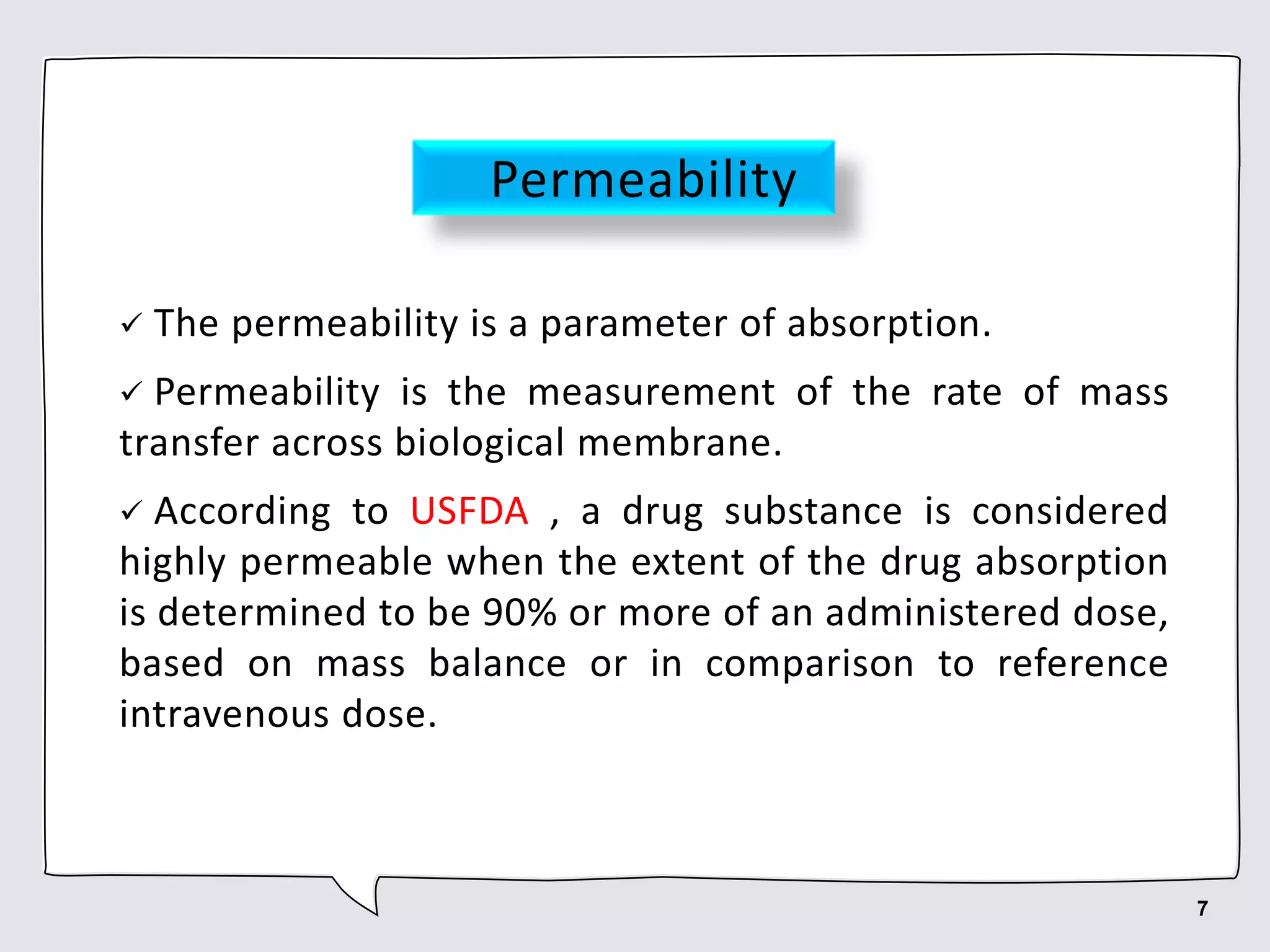


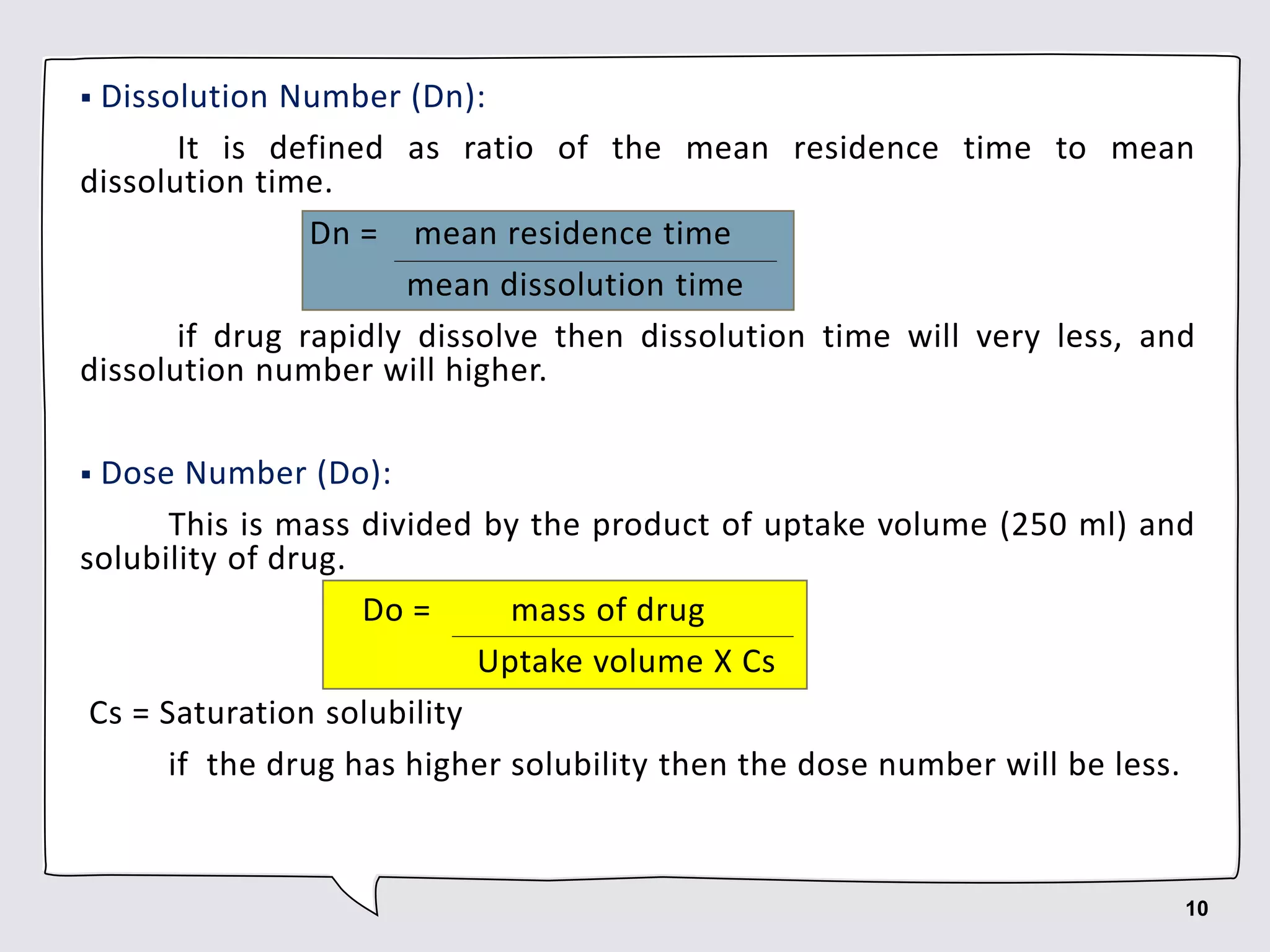
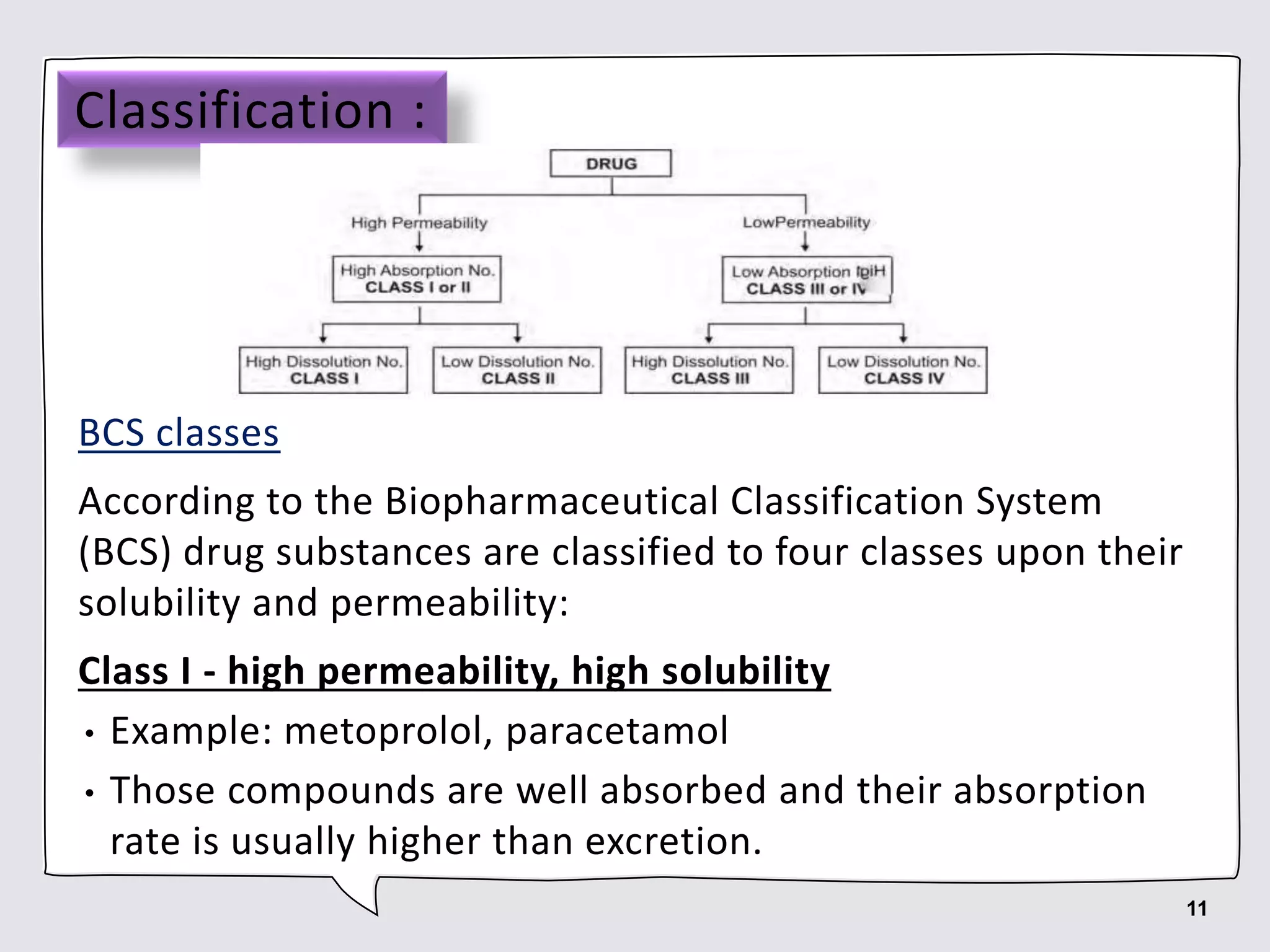
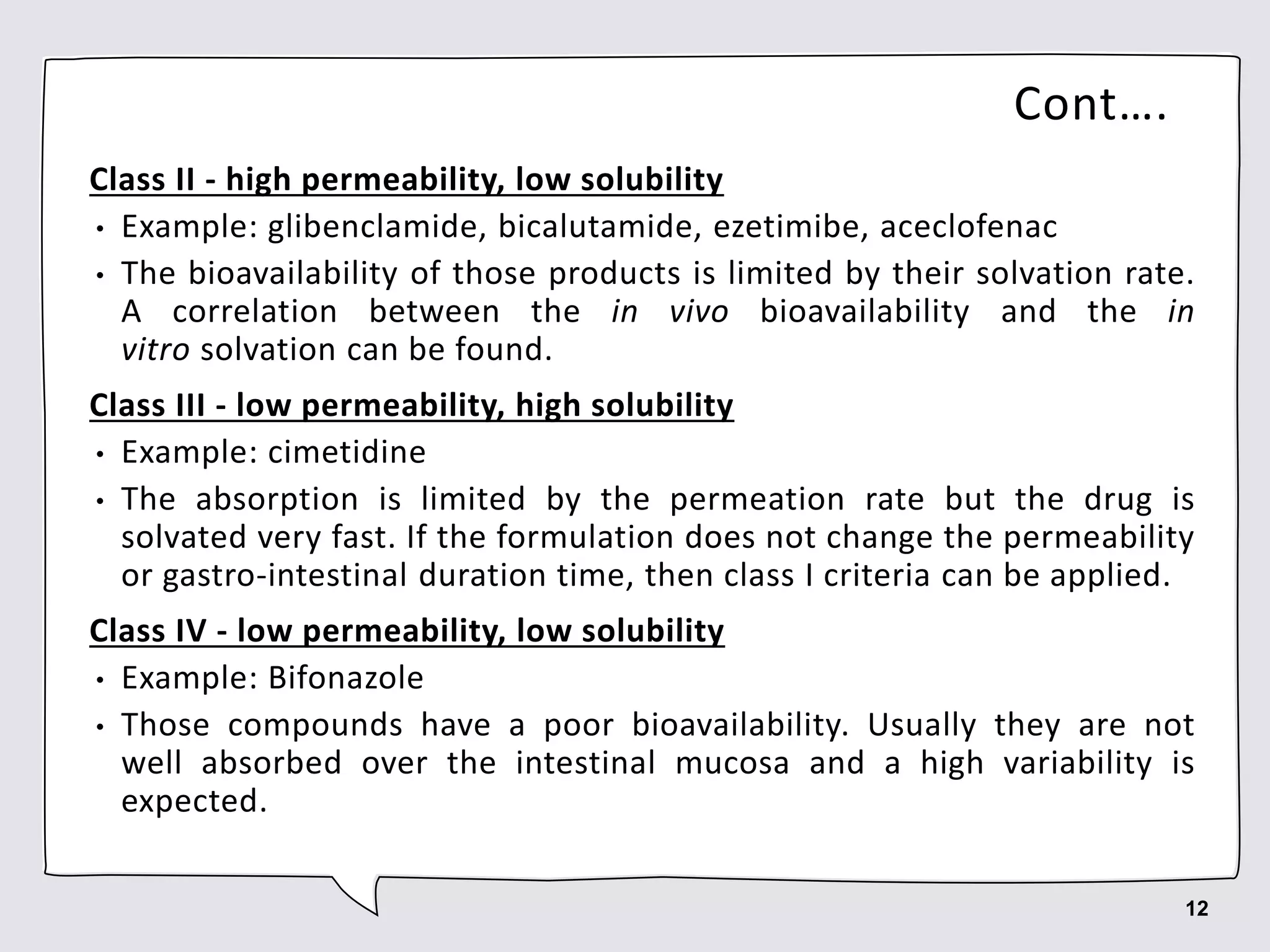
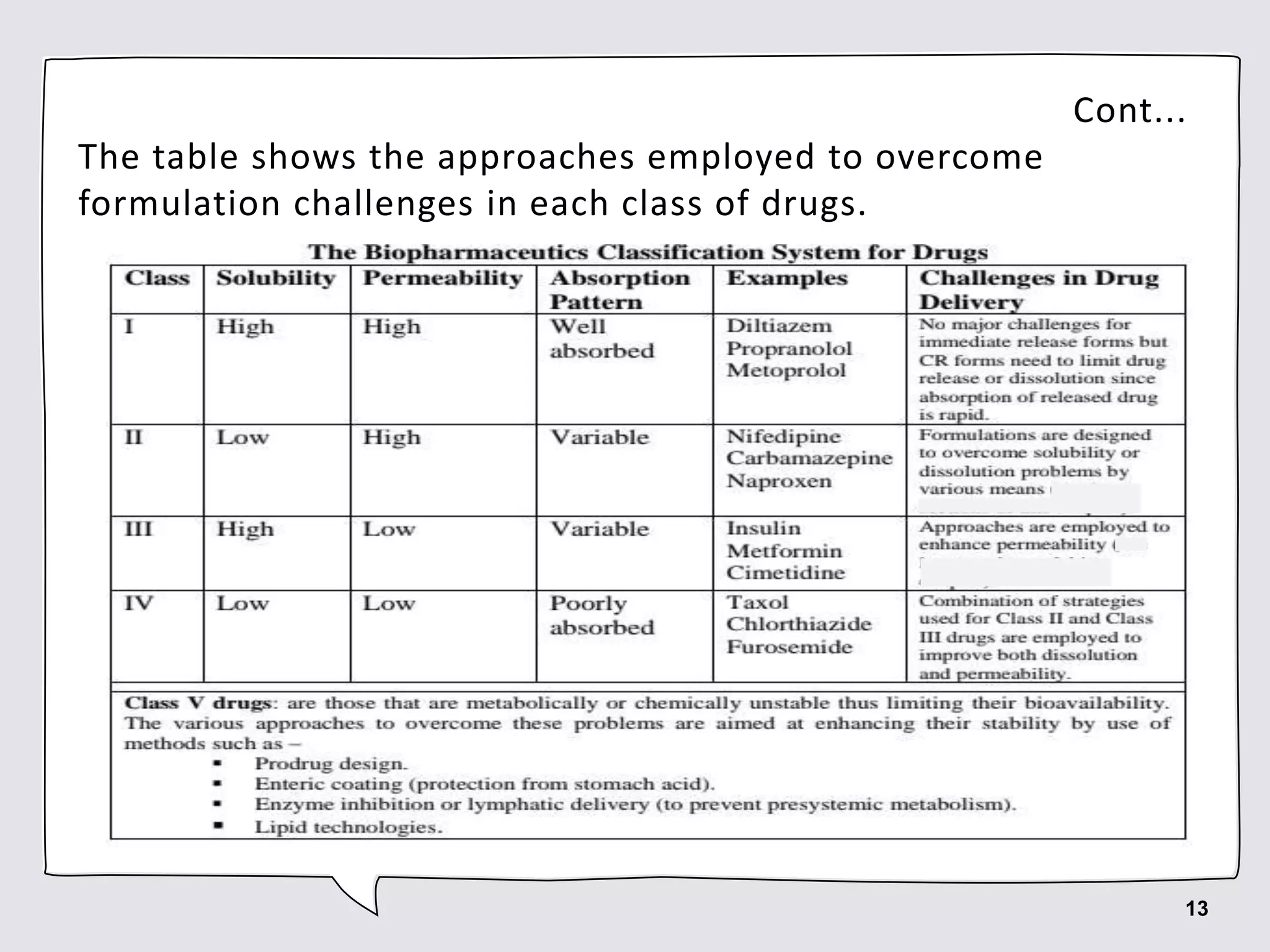
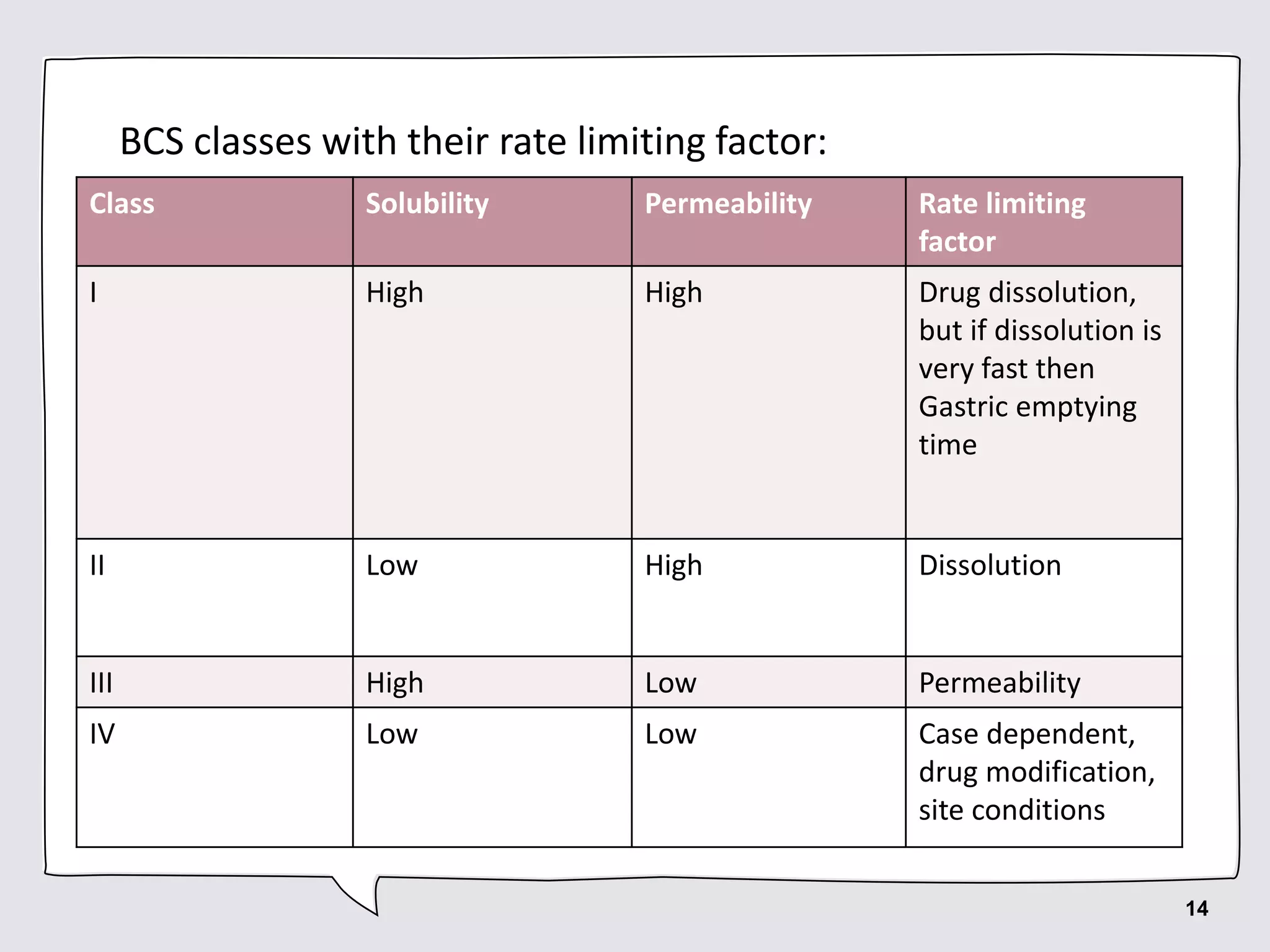
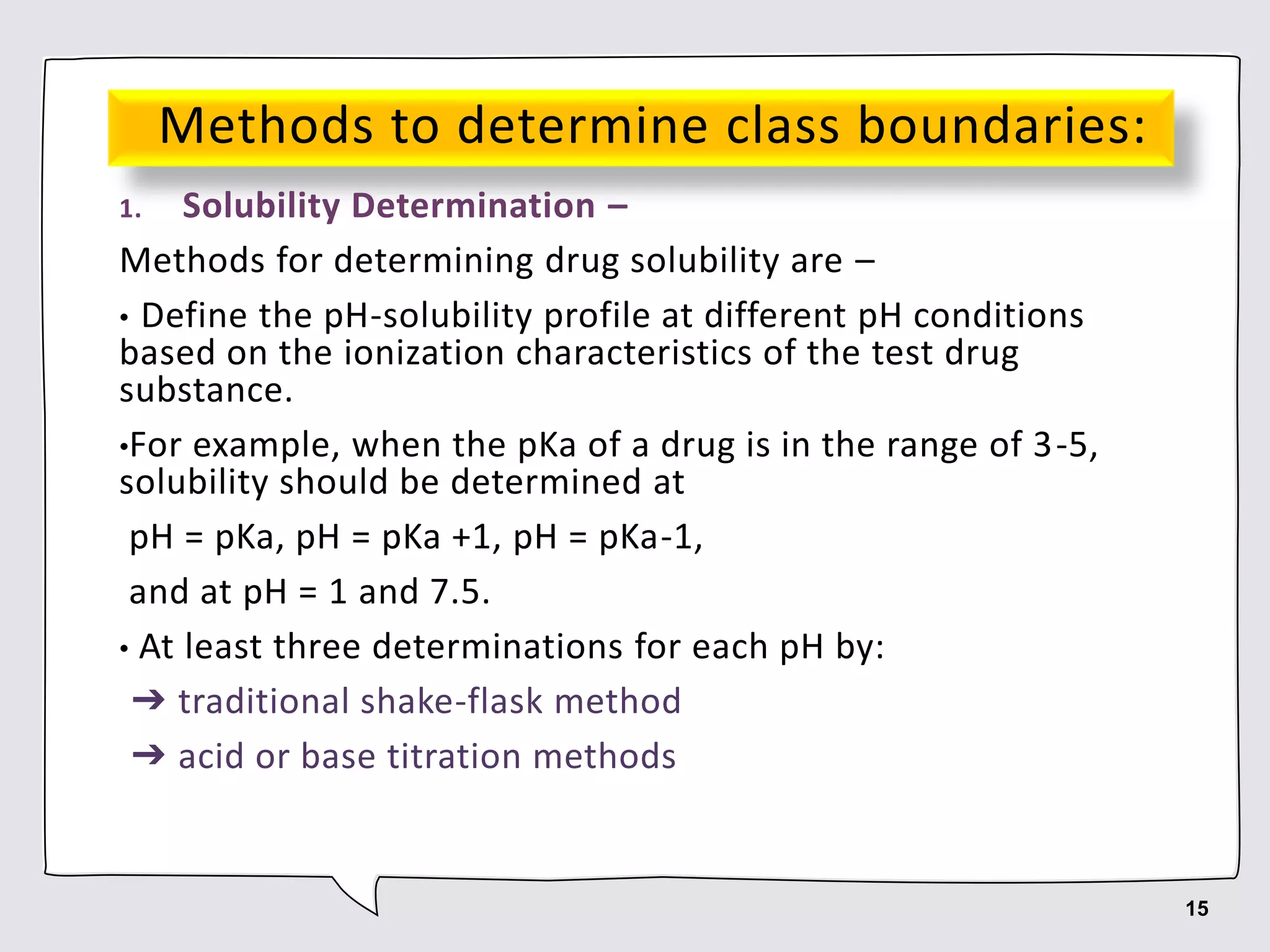
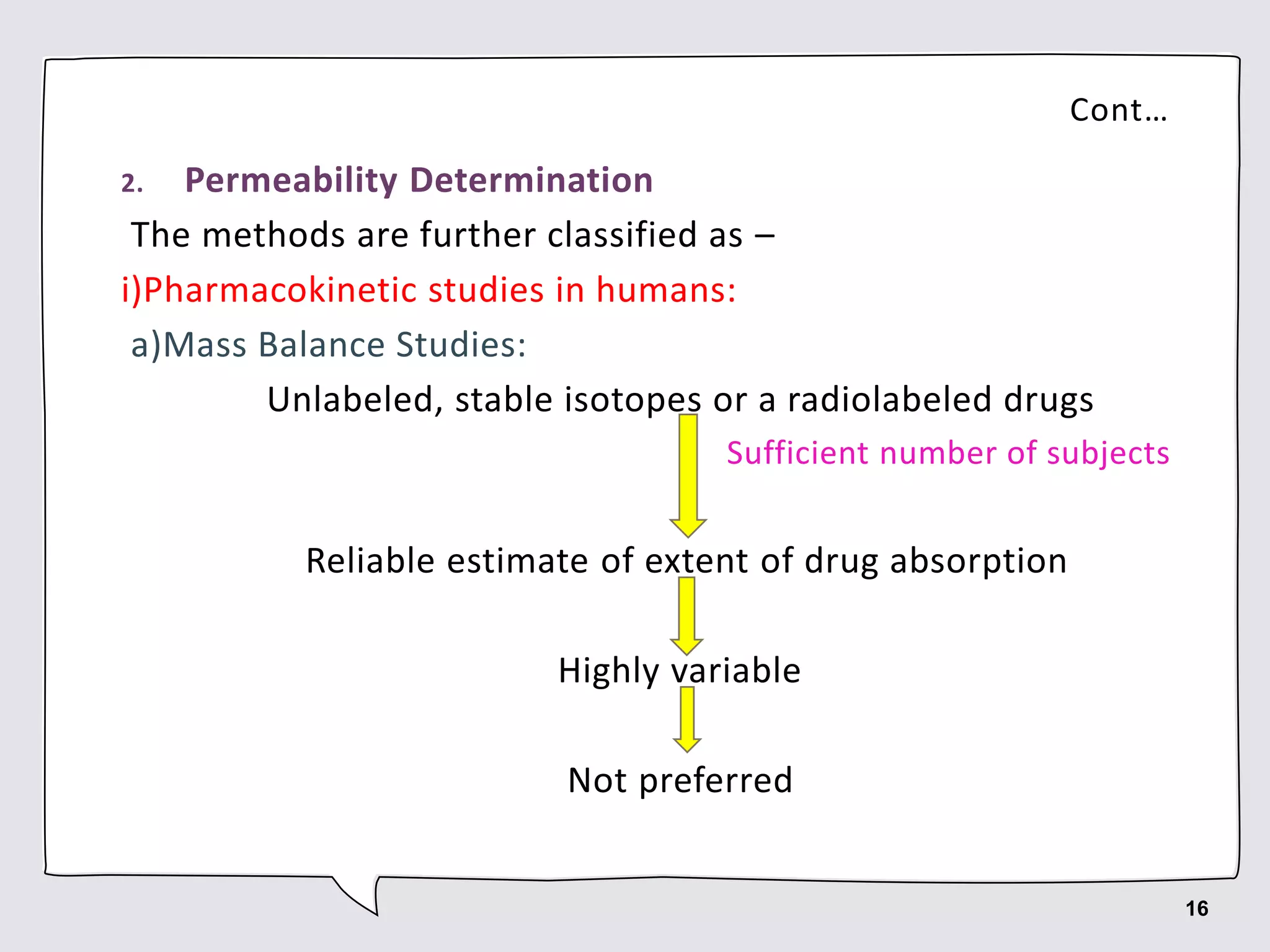

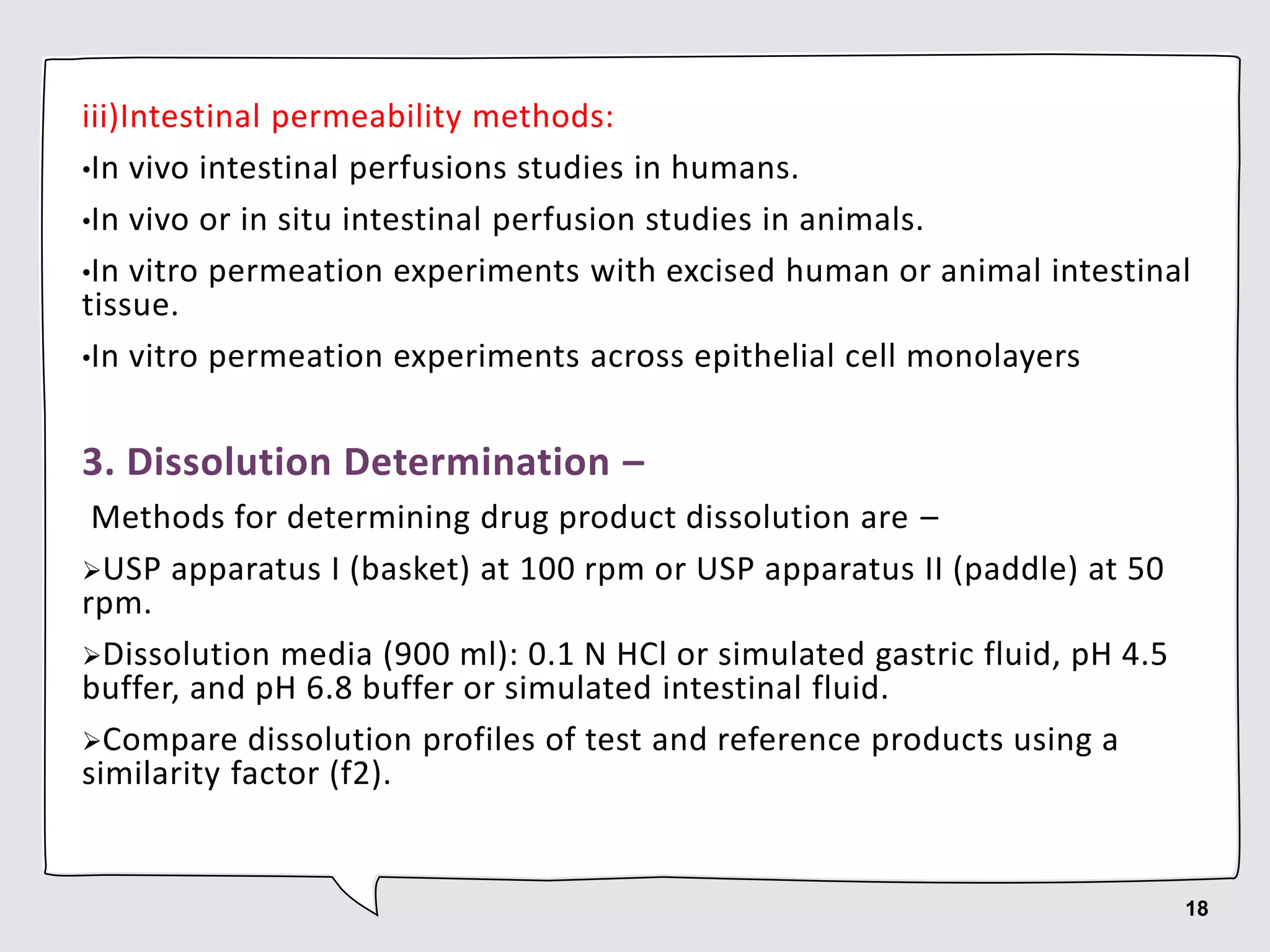
![Similarity Factor f2:
• When comparing dissolution profiles of test & reference
products.
• Not necessary if both ≥ 85 % dissolved in ≤15 minutes in all
three dissolution media.
f2 = 50 • log {[1 + (1/n)∑t=1n(Rt - Tt)²]^-0.5• 100}
Where:
n is the no. of time points
Rt is the dissolution value of the reference product at time t
Tt is the dissolution value of the test product at time t
• Products are considered similar if f2 ≥50
19](https://image.slidesharecdn.com/bcsclassificationbysnehaautosaved-220217153410/75/Bcs-classification-by-sneha-gaurkar-19-2048.jpg)
